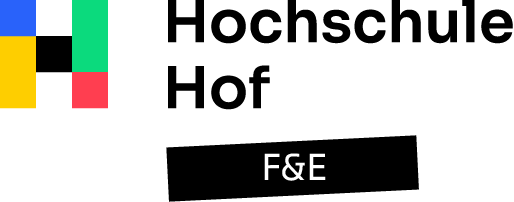
Analysten, Forscher und Berater blicken in die Zukunft.
Wagener, Andreas (2017)
Interview MK Mittelstand kompakt, 010 Comarch Magazin, Frühjahr/Sommer 2017 https://www.comarch.de/fileadmin/Ueber_Uns/News/cgdw-1463_mk10_v10-web.pdf.
Künstliche Intelligenz in der Industrie.
Wagener, Andreas (2017)
Interview. Mit Gerrit Bruns (2017): In: RadioQ, 23.05.2017, https://soundcloud.com/radioq/kunstliche-intelligenz-in-der-industrie.
Analysten, Forscher und Berater blicken in die Zukunft.
Wagener, Andreas (2017)
Interview mit Gerrit Bruns (2017): In: RadioQ, 23.05.2017, https://soundcloud.com/radioq/kunstliche-intelligenz-in-der-industrie.
Kundenintegration im Social Web: Wie man mit strategischem Influencer Marketing den Kunden zum Werbebotschafter machen kann
Wagener, Andreas (2017)
PraxisWissen – German Journal of Marketing, 01/2017, S. 52 – 61, 2017 (01/2017), 52-61.
„Digitalisierung - Transformation oder Eruption der Sozialwirtschaft? Chancen zur Zukunftsbewältigung oder Ende der Menschlichkeit?“
Wolff, Dietmar (2017)
„Der Zukunftskongress der Sozialwirtschaft – Die vernetzte Gesellschaft sozial gestalten“; Kongress der Sozialwirtschaft e.V. (Hrsg.) 2017, 67-76.
Der digitale Wandel in der Sozialwirtschaft
Wolff, Dietmar (2017)
Der Paritätische Rheinland-Pfalz | Saarland – Mitgliederversammlung.
Altenpflege 4.0 - Wie Technik unseren Pflegealltag revolutioniert
1. Zukunftskongress Pflege der GenoPfleGe eG, Frankfurt/M. 2017.
Digitale Lernszenarien in der beruflichen Weiterbildung
Wolff, Dietmar (2017)
diakonie unternehmen 2/2017.
Digital unterstützte Fortbildungen – Definition & Überblick über die Formate
Wolff, Dietmar (2017)
FINSOZ Forum „Fort- und Weiterbildungen mit e-Learning“, Fulda 2017.
Trends und Perspektiven bei der Digitalisierung des Gesundheitsmarktes
Wolff, Dietmar (2017)
RSR-Fachtagung 2017 - Hilfsmittelmarkt - Chancen und Perspektiven, Nürnberg 2017.
Das Bundesteilhabegesetz (BTHG) und seine Konsequenzen - nicht nur für die IT
Wolff, Dietmar (2017)
MICOS Kundentag, Magdeburg 2017.
Digitalisierung – kein Modethema
Wolff, Dietmar; Kreidenweis, H. (2017)
CURACONCEPT Kompaktwissen Aufsichtsgremium – Gesundheits- und Sozialwirtschaft 2025 – Perspektiven und Trends.
IT-Report für die Sozialwirtschaft 2017
Kreidenweis, H.; Wolff, Dietmar (2017)
Katholische Universität Eichstätt-Ingolstadt, Eichstätt 2017.
Impulsvortrag – aktuelle Problemlage
Wolff, Dietmar (2017)
AWV/FINSOZ Forum „E-Rechnung in der Sozialwirtschaft - Potentiale und Barrieren“, Kassel 2017.
Die Digitalisierung der Schreibtischarbeit: Von der Industrie 4.0 zum Büro 4.0
Wagener, Andreas (2017)
Interview mit Janna Degener-Storr (2017): In: UNICUM Beruf, Nr 5/2017, S. 10.
Digitalisierung – Transformation oder Eruption der Sozialwirtschaft? Chance zur Zukunftsbewältigung oder Ende der Menschlichkeit?
Wolff, Dietmar (2017)
10. Kongress der Sozialwirtschaft, Magdeburg 27. April 2017.
Digital Business & Digital Commerce.
Wagener, Andreas (2017)
Im Rahmen der International Week der Universität Alicante/Universidad de Alicante, (Englisch), 06.04.2017, Alicante.
Altenpflege 4.0. Wie der digitale Wandel den Markt verändert und was Führungskräfte wissen müssen
Kreidenweis, H.; Wolff, Dietmar (2017)
Zukunftstag Altenpflege, Nürnberg 26. April 2017.
Knowledge Management 4.0 - Lessons Learned from IT Trends
Peinl, René (2017)
Professional Knowledge Management (WM 2017) .
Open Access
One could think that knowledge management (KM) is already fully digitized and therefore the discussion about digital transformation is already too late here. Documents are mostly created digitally for quite some years. Communication is happening mostly in digital form and also cooperation is often social media that raises awareness for things colleagues are doing. However, the mega trend digitaliza-tion stands for more than just electronic forms of data creation, management and storage.
Trends und Perspektiven aus Sicht der IT mit Blick auf andere Bereiche/Branchen
Wolff, Dietmar (2017)
BVmed Informationsveranstaltung „Digitalisierung des Gesundheitsmarktes“, Hamburg 05. April 2017.
Forschung und Entwicklung
Hochschule für Angewandte Wissenschaften Hof
Alfons-Goppel-Platz 1
95028 Hof
T +49 9281 409 - 4690
valentin.plenk[at]hof-university.de
Betreuung der Publikationsseiten
Daniela StockT 09281 409 – 3042
daniela.stock.2[at]hof-university.de

